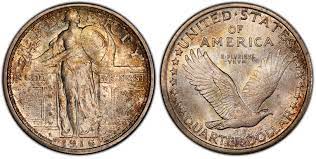
The post What Quarters Are Worth Money? Valuable Quarters by Henry Stater appeared first on Benzinga. Visit Benzinga to get more great content like this.
The quarter is a quintessential piece of American numismatics. Though they are not usually the most valuable or rare coins because of their high mintage, some are worth hundreds or thousands of dollars.
Table of contents
[Show]
What Can Make Quarters Valuable?
The value of a quarter is determined by several factors, including its condition, date, mint marks and mint errors. Generally, the better the condition of the coin, the higher its value. Older coins with rare dates can fetch a higher price because of their scarcity, especially if they are in great condition. Mint marks, which indicate where a coin was produced, can also affect its value; certain mints have produced fewer coins each year, often making them more valuable. Mint errors, such as off-center strikes or double dies, can significantly increase a coin’s worth because of their rarity and unique value as a collectible.
The Most Valuable Quarters Worth Money
1916 Standing Liberty Quarter
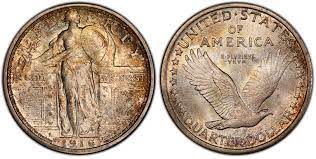
This first-year issue is highly sought after by collectors because of its low mintage of just over 52,000 coins. It replaced the Barber Quarter in 1916 and was eventually discontinued and replaced with the Washington Quarter in 1932. The design features Lady Liberty standing between two large gates holding a shield and an olive branch. The coin’s design was changed the following year to cover Liberty’s exposed chest, making the original 1916 version even more unique. Even well-worn 1916 Standing Liberty Quarters can sell for over $1,000. In good condition, this quarter can be worth around $3,000, while pristine examples can fetch up to $20,000-$40,000 or more.
1932-D and 1932-S Washington Quarters

The 1932-D and 1932-S are considered the rarest and often the most valuable Washington quarters because of their low mintages. The 1932-S was the smallest mintage in the Washington Quarter’s history with only 408,000 coins. The 1932-D was right behind it with 436,800 coins minted. These quarters feature the iconic profile of George Washington on the obverse side and the classic American Eagle on the reverse. In poor condition, a 1932-D or S Washington Quarter can be worth around $100, while uncirculated examples can reach values of $10,000. Impeccable mint-state 1932-D or S quarters can sell for even more. A near-perfect 1932-D specimen in MS 66 condition sold for $143,750 in 2008.
1964-D Washington Quarter
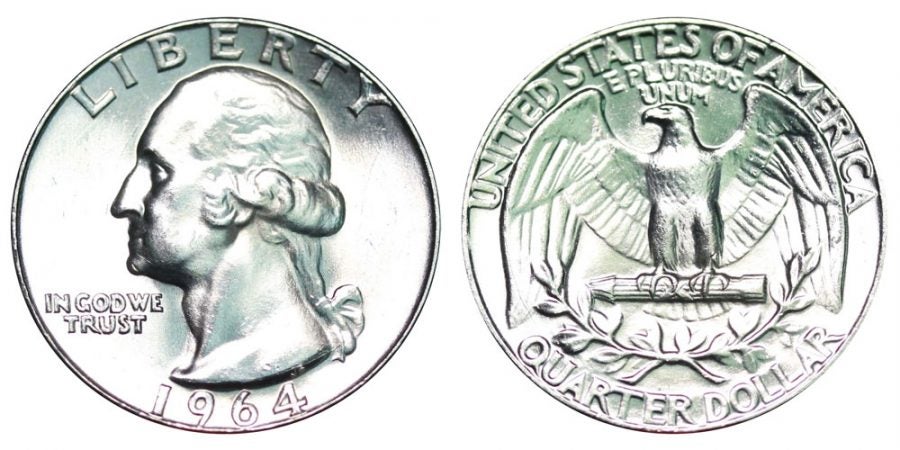
The 1964-D Washington Quarter is the last regular strike quarter produced with 90% silver content. While this quarter had a relatively high mintage, making it fairly common in average or good condition, it becomes more valuable in exceptional grades. Coins in average or good condition are usually worth between $8 and $20. However, those in MS67 and better condition can be worth hundreds of dollars, while specimens graded MS68 can command prices of $20,000 to $40,000. A particularly rare and valuable variety of the 1964-D Washington Quarter featuring a double die obverse error can fetch even higher prices, especially in uncirculated condition.
1999-P Delaware State Quarter
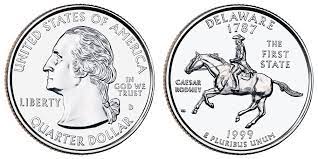
A rare mint error on this coin features a “spitting horse” caused by a die gouge that makes it appear as if the horse is spitting. This error has made the coin highly sought after by collectors. The 1999-P Delaware State Quarter with the spitting horse error can be worth around $20 to $50 in circulated condition, while uncirculated examples can command prices of $300 or more. Regular strike 1999-P Delaware State Quarters in the best condition (at least MS68) can sell for over $1,000.
1776-1976 Bicentennial Quarter

While millions of these 1976 Bicentennial Quarters were minted to commemorate America’s 200th birthday, a small number were struck in 40% silver. These silver quarters can be identified by their “S” mint mark and a slightly different design featuring a drummer boy on the reverse side. Only the San Francisco mint (denoted by the “S” mint mark) produced this version of the coin. Note that the San Francisco mint also created copper-nickel-clad proof Bicentennial Quarters with the “S” mint mark, so the mark isn’t exclusive to the 40% silver version. In uncirculated condition, these silver Bicentennial Quarters can be worth around $8 to $10, while near-perfect specimens in MS 67+ or better condition can sell for $4,250 or more.
How to Tell if I Have a Rare Quarter
Here’s how to check if you have a rare quarter and how to estimate its value:
- Check the internet for what marks, mint errors and dates to look for on your type of quarter. For example, some have common mint errors that make the coin more valuable like the 1999-P Delaware State Quarter spitting horse mint error.
- Estimate the condition of your coin. Look for imperfections like dents or scratches and check if the original mint luster is still intact. For more guidance, check out Benzinga’s article dedicated to coin grading.
- Closely examine your coin and anything you noted in step one. Look for features that could make it rare or valuable including its date, the presence of mint errors and mint marks.
- Enter the details of your coin online to see what similar coins have sold for recently. The Professional Coin Grading Service (PCGS) is a good resource for this. This step should give you a decent estimate, but for a more accurate valuation, consult a professional coin grader or appraiser.
How to Buy and Sell Rare Quarters
While most quarters aren’t worth more than their face value, some rare quarters are absolutely worth selling. The best way to buy and sell rare quarters is through a reputable auction platform like Heritage Auctions.
Other Coins You May Love
Take a look at three other coins that you may be interested in.
Franklin Half Dollars
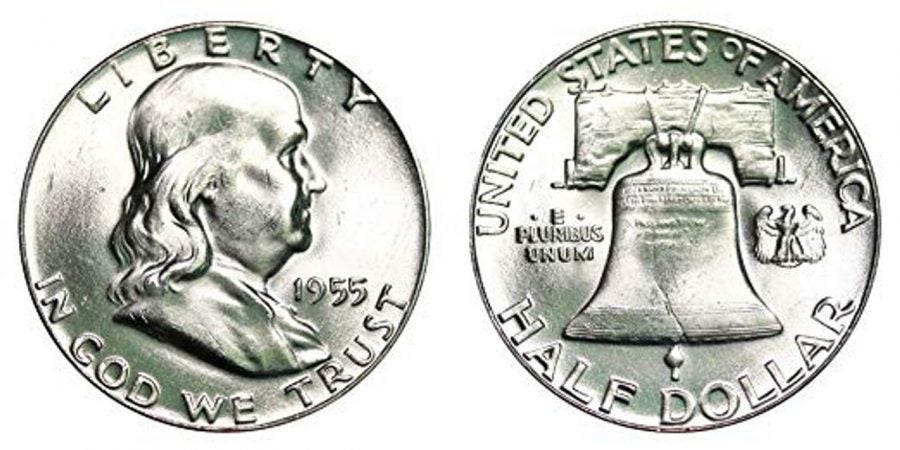
These coins were minted from 1948 to 1963 and feature an image of Benjamin Franklin on the obverse side. The reverse side of the coin showcases the Liberty Bell, along with a small eagle, which was added to the design to fulfill the legal requirement of featuring an eagle on half dollars. These 90% silver coins were the last half dollars to be produced for general circulation with this high silver content. You can buy Franklin Half Dollars from one of the best precious metals dealers, Red Rock Secured.
Silver Mercury Dimes
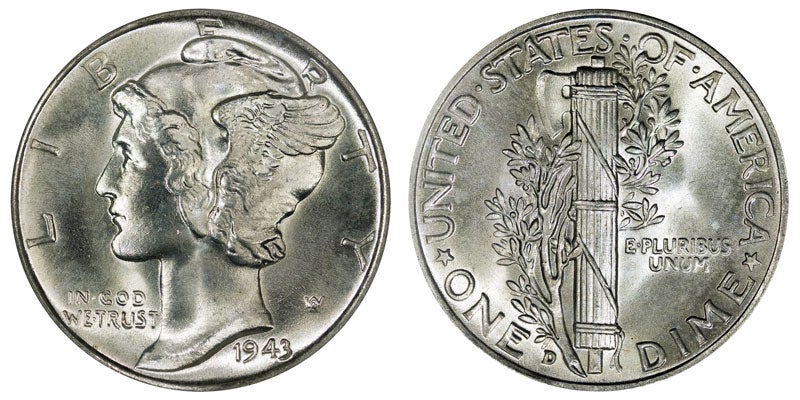
These beautiful coins were minted from 1916 to 1945 and feature a striking image of Lady Liberty wearing a winged cap, which was often mistaken for the Roman god Mercury, thus giving the coin its nickname. Designed by Adolph A. Weinman, the reverse side of the coin displays an ancient symbol of a bundle of rods with an ax, known as a fasces, symbolizing authority and strength, and an olive branch representing peace. Composed of 90% silver, these dimes are popular among collectors for their beauty and historical significance. They can be purchased through coin dealers like Red Rock Secured.
American Gold Eagle Coins

These popular gold coins are produced by the United States Mint and have been used since 1986. The obverse side features a design inspired by Augustus Saint-Gaudens’ famous 1907 depiction of Lady Liberty holding a torch and an olive branch, with the Capitol building in the background. The reverse side, designed by Miley Busiek Frost, depicts a family of eagles with a male eagle carrying an olive branch flying above a female eagle and her hatchlings in their nest. Available in various sizes from 1/10 oz to 1 oz, these coins are guaranteed for weight and purity by the U.S. government. You can purchase American Gold Eagle Coins from reputable dealers like Advantage Gold, Lear Capital, American Hartford Gold and Red Rock Secured.
The post What Quarters Are Worth Money? Valuable Quarters by Henry Stater appeared first on Benzinga. Visit Benzinga to get more great content like this.
